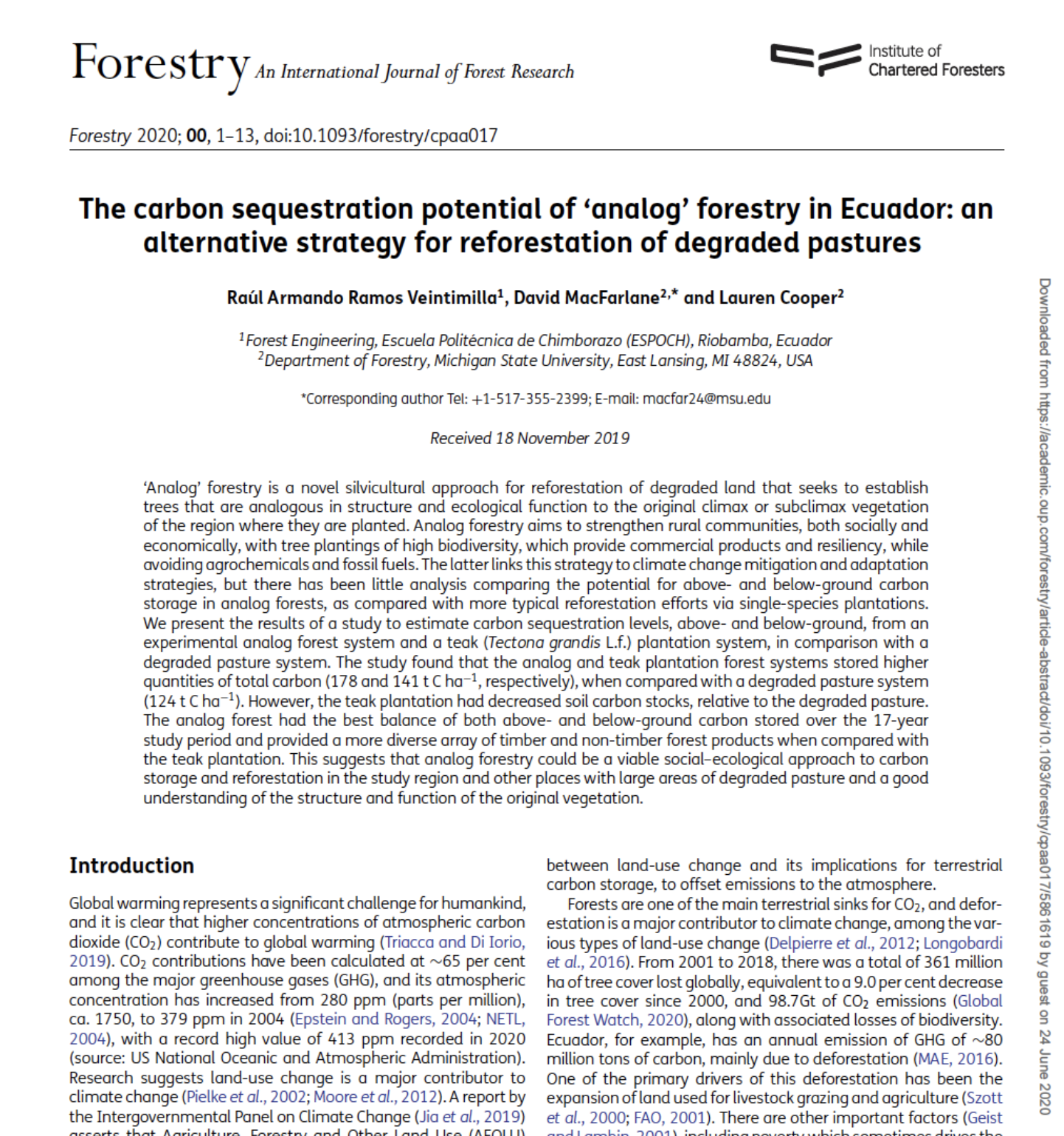New paper published in 'Forestry' on carbon implications of Analog Forestry in Ecuador
Raúl Ramos Veintimilla, David MacFarlane, and Lauren Cooper explain the potential of an alternative silvicultural system called Analog Forestry (AF).

In a recent piece titled, “The Carbon Sequestration Potential of ‘Analog’ Forestry in Ecuador: An Alternative Strategy for Reforestation of Degraded Pastures”, Raúl Ramos Veintimilla, David MacFarlane, and Lauren Cooper explain the potential of an alternative silvicultural system called Analog Forestry (AF). As land-use change is a major contributor to climate change, the authors conducted this study to explore the relationship between land-use change and implications for terrestrial carbon storage. Specifically, as land conversion and restoration options are under consideration, data on carbon storage from various land use options can inform such options in terms of carbon storage in various pools.
Further, tree planting and other restoration efforts are essential in terms of environmental benefits, but also can provide an economic opportunity.
Although more AF system studies are required, the system researched in this study demonstrated increased carbon sequestration across all pools compared to pasture and teak plantation systems. This is due to the fact that AF systems demonstrate alignment with concepts of adaptation to and mitigation of climate change, which address economic, ecological, social, and cultural benefits not only in agreement with Ecuadorian environmental legislation but could inform land-use decisions in other geographies. Find out more about the research in the abstract below. Read the full study published on “Forestry: An International Journal of Forest Research”.

Abstract:
“Analog” Forestry is a novel silvicultural approach for reforestation of degraded land that seeks to establish trees that are analogous in structure and ecological function to the original climax or sub-climax vegetation of the region where they are planted. Analog Forestry aims to strengthen rural communities, both socially and economically, with tree plantings of high biodiversity, which provide commercial products and resiliency, while avoiding agrochemicals and fossil fuels. The latter links this strategy to climate change mitigation and adaptation strategies, but there has been little analysis comparing the potential for above- and below-ground carbon storage in Analog forests, as compared to more typical reforestation efforts via single-species plantations. We present the results of a study to estimate carbon sequestration levels, above- and below-ground, from an experimental Analog Forest system and a teak (Tectona grandis L. f.) plantation, in comparison to a degraded pasture system. The study found that the Analog and teak plantation forest systems stored higher quantities of total carbon (178 and 141 t C ha-1, respectively), when compared to a degraded pasture system (124 t C ha-1). However, the teak plantation decreased soil carbon stocks, relative to the degraded pasture. The Analog Forest had the best balance of both above and below-ground carbon stored over the 17-year study period and provided a more diverse array of timber and non-timber forest products when compared to a teak plantation. This suggests that Analog Forestry could be a viable social-ecological approach to carbon storage and reforestation in the study region, and other places with large areas of degraded pasture to restore and a good understanding of the structure and function of the original vegetation.



 Print
Print Email
Email